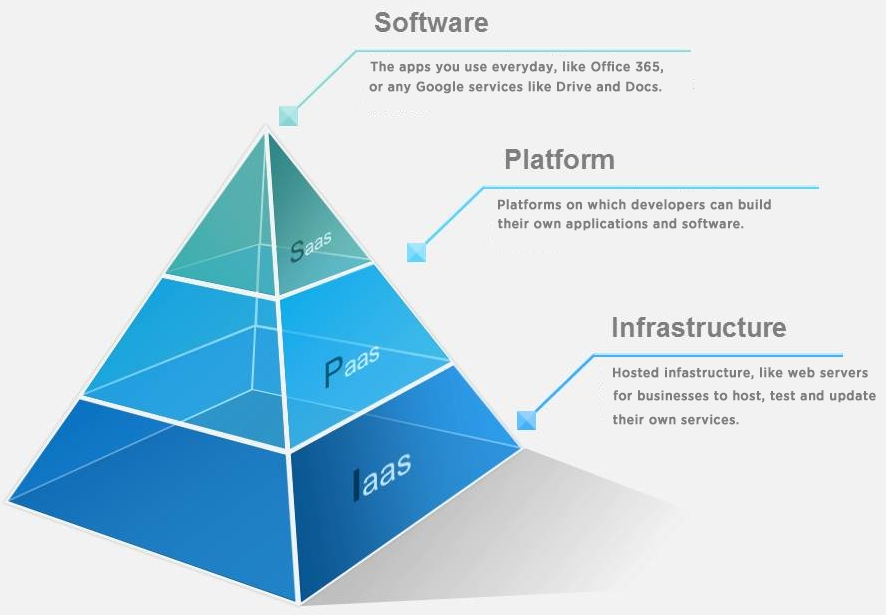We’ve covered the basics of CPaaS before, but we wanted to tackle it again and focus on another aaS term: UCaaS. Are they basically the same? Are they drastically different but only to developers and not the person researching new VoIP providers?
To help explain the differences between CPaaS and UCaaS, let’s zoom out for a moment.
IaaS vs PaaS vs SaaS

Infrastructure, platform, and software as a service look neatly compartmentalized in the pyramid above. And there are certainly many service offerings out there that definitively fit into one or another. More often than not, services blur the lines between two if not all three of the sections. For example, Amazon Web Services (AWS) is strongly in the IaaS space, but they cross over into PaaS as well.
To figure out which area your business falls into, take a look at your team and resources. Building, hosting, and maintaining communications infrastructure requires quite a bit of capital, which is why many companies opt for IaaS or PaaS providers. In simple terms, you can group the three by which people use it:
- SaaS: For end users. You want your software and you don’t need—or necessarily want—to know how it works, nor do you need much customization. Think Google Drive, Salesforce, and even your contact center.
- PaaS: For developers. The true developers who want to focus on nothing but their code. They find existing infrastructure and build on top of it. This is where you bypass the typical “What you see is what you get” aspect of SaaS and instead scale and customize it to your heart’s desire. Think Force.com, OpenShift, and Google App Engine.
- IaaS: For DevOps and sysadmins. Which means most of you can go ahead and skip to the next section. IaaS goes the next level below code and offers cloud servers, storage, operating systems—all the base infrastructure necessary to build apps—but that most companies can’t or don’t want to handle. Think Amazon Web Services, DigitalOcean, Microsoft Azure.
Do I Want UCaaS or CPaaS?
UCaaS
Unified Communications, or UC, refers to all of your communication tools—voice, video, text—neatly collected into a single package. UCaaS fits mostly into the SaaS sphere. Companies can choose their UCaaS provider and sit back, knowing that the technical side is covered by the UCaaS provider.
OnSIP has excelled in the UCaaS space for years. Our app offers voice, video, voicemail, reporting, and more—all in one interface. We also handle the platform upkeep, so our customers only have to plug in their phones. And with our WebRTC innovations, we’ve even expanded past simple plug and play.

CPaaS
Communications Platform as a Service, or CPaaS, dives into PaaS territory. Because we built the OnSIP platform from scratch and developed our own JavaScript library, SIP.js, we also cater to businesses with their own dev teams. Using our platform as a springboard, developers at other companies are able to build on top of the base communications infrastructure. That way, they can focus on growth and innovation without having to create and maintain the initial real-time communication (RTC) building blocks.
Which option is best for you involves any number of factors, but the easiest line to draw is this: Are you building your own apps or not? If no, great! Stick with UCaaS. Building your own tech but aren’t about to shell out for in-house servers? CPaaS is your friend. When it comes to which CPaaS provider to choose, well, we have you covered there too.

